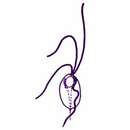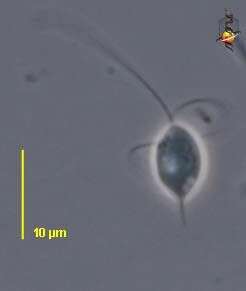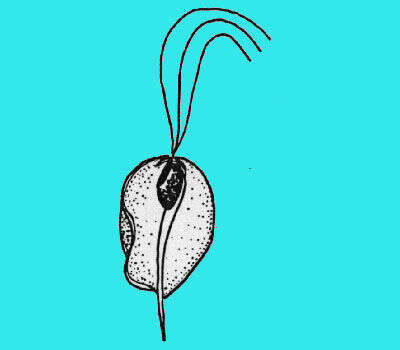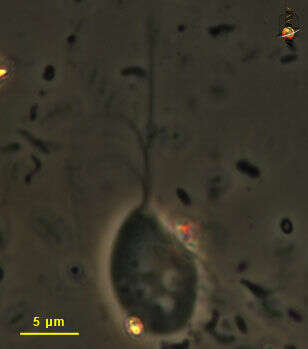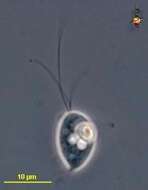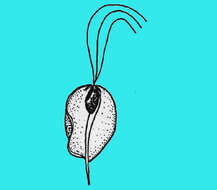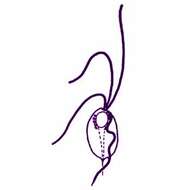-
Pseudotrichomonas (sue-dough-trick-owe-moan-ass) one of the very few free-living trichomonad flagellates. With four unequal flagella arising near the anterior apex of the cell, and with an axostyle which emerges at the back of the cell. One flagellum usually forming an undulating membrane, although that is not evident here. Phase contrast.
-
Pseudotrichomonas (sue-dough-trick-owe-moan-ass) one of the very few free-living trichomonad flagellates. With four unequal flagella arising near the anterior apex of the cell, and with an axostyle which emerges at the back of the cell. One flagellum usually forming an undulating membrane, although that is not evident here. Phase contrast.
-
-
This free living trichomonad has three flagella projecting anteriorly and one passing backwards over the cell. This cell was not uncommon in organically rich sediments around the margins of Mono Lake.
-

Pseudotrichomonas keilini Bishop, 1939. Cells plastic, especially when compressed, but usually pyriform, sometimes with a stiff posterior spike, encountered in both brackish and freshwater environments. The brackish strain is 7 to 17 microns long and the freshwater strain 8 to 12 microns long. The spike, when present, is usually less than 10 microns, but may be as long as 20 microns in compressed cells. Usually four flagella insert subapically but some cells were observed with three or five flagella. Three subequal flagella, the longest up to twice the length of the body, beat anteriorly with a co-ordinated clawing motion. The posterior flagellum is up to one and half times the length of the body, is usually attached to the cell body and beats as an undulating membrane. The length of the undulating membrane varies from less than 2 microns to almost the length of the cell. The nucleus is located in the anterior half of the cell and may be seen surrounded by granules. Food vacuoles are present in the cell. Cells may produce thin posterior threads of cytoplasm, which often adhere to the substrate. Cells swim with a jerky rotating motion.

